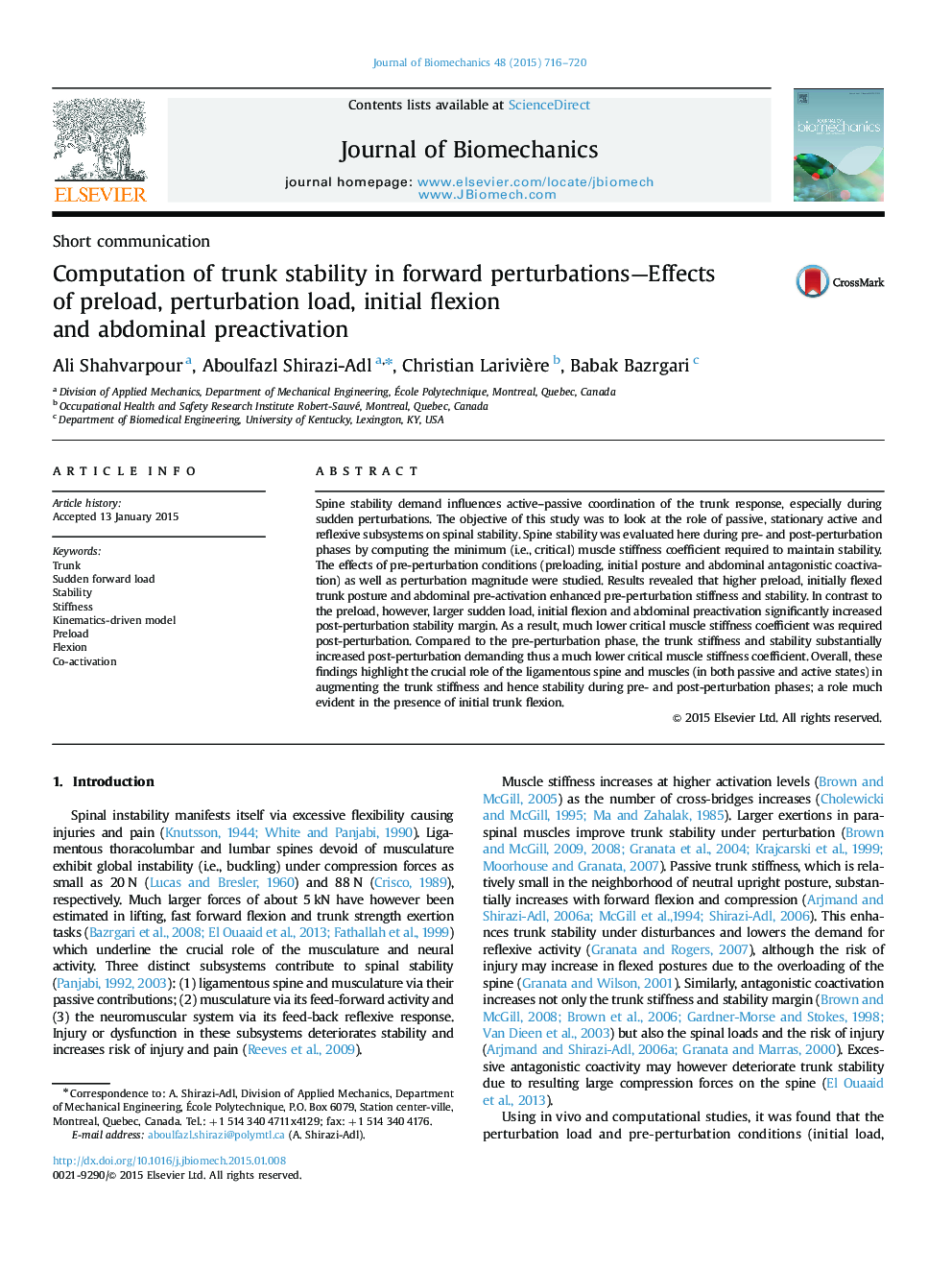| Article ID | Journal | Published Year | Pages | File Type |
|---|---|---|---|---|
| 10431743 | Journal of Biomechanics | 2015 | 5 Pages |
Abstract
Spine stability demand influences active-passive coordination of the trunk response, especially during sudden perturbations. The objective of this study was to look at the role of passive, stationary active and reflexive subsystems on spinal stability. Spine stability was evaluated here during pre- and post-perturbation phases by computing the minimum (i.e., critical) muscle stiffness coefficient required to maintain stability. The effects of pre-perturbation conditions (preloading, initial posture and abdominal antagonistic coactivation) as well as perturbation magnitude were studied. Results revealed that higher preload, initially flexed trunk posture and abdominal pre-activation enhanced pre-perturbation stiffness and stability. In contrast to the preload, however, larger sudden load, initial flexion and abdominal preactivation significantly increased post-perturbation stability margin. As a result, much lower critical muscle stiffness coefficient was required post-perturbation. Compared to the pre-perturbation phase, the trunk stiffness and stability substantially increased post-perturbation demanding thus a much lower critical muscle stiffness coefficient. Overall, these findings highlight the crucial role of the ligamentous spine and muscles (in both passive and active states) in augmenting the trunk stiffness and hence stability during pre- and post-perturbation phases; a role much evident in the presence of initial trunk flexion.
Related Topics
Physical Sciences and Engineering
Engineering
Biomedical Engineering
Authors
Ali Shahvarpour, Aboulfazl Shirazi-Adl, Christian Larivière, Babak Bazrgari,
